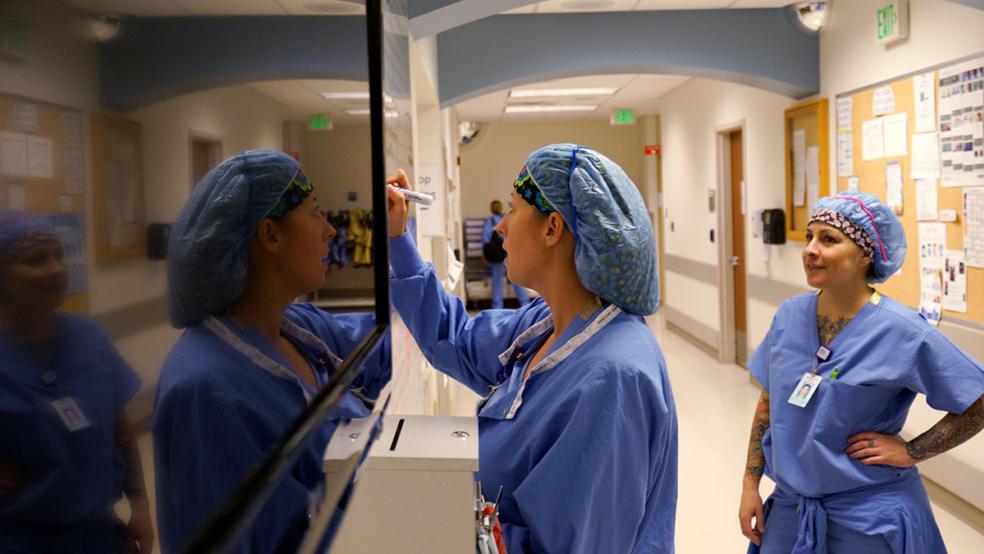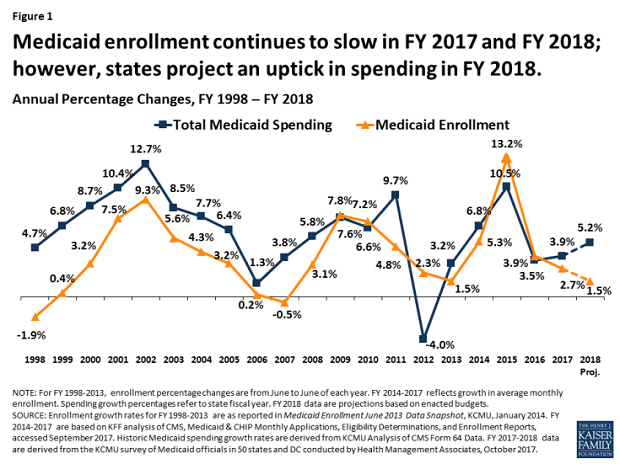Medicaid enrollment growth nationwide slowed to 2.7 percent in fiscal 2017, down from 3.9 percent in 2016 and 13.2 percent in 2015, after the implementation of Medicaid expansion under Obamacare, according to a new report from the Kaiser Family Foundation. Enrollment growth is expected to slow further, to 1.5 percent, in 2018.
At the same time, total Medicaid spending grew by 3.9 percent in fiscal 2017, a slight acceleration from 3.5 percent growth the prior year, though slower than the 10.5 percent growth in 2015.
The annual survey of Medicaid directors around the country also finds that states project total Medicaid spending will grow 5.2 percent in 2018. “Major drivers of spending growth include rising costs of prescription drugs and long-term care services and supports, and increases in payment rates for most provider groups,” the report says.
And states will have to cover more of those costs themselves. Their share of Medicaid spending grew 3.5 percent in 2017 but is expected to grow 6 percent next year, in part because the 31 states (plus D.C.) that expanded Medicaid under Obamacare are now footing part of the bill after years in which the federal government covered all the expansion costs. “In addition,” a Kaiser press release says, “some states are experiencing a decrease in the formula-driven federal match rate for the traditional Medicaid population that can result in faster state spending growth.”
States also signaled some concerns about potential budget crunches ahead, given that phasing out of federal contributions for expanded Medicaid programs as well as Congress’ failure thus far to reauthorize the Children’s Health Insurance Program and the uncertainty about Medicaid funding levels created by the GOP push to repeal and replace Obamacare.
Medicaid provides coverage to about one in five Americans, or roughly 74 million people, and accounts for a sixth of all health care spending in the U.S.






